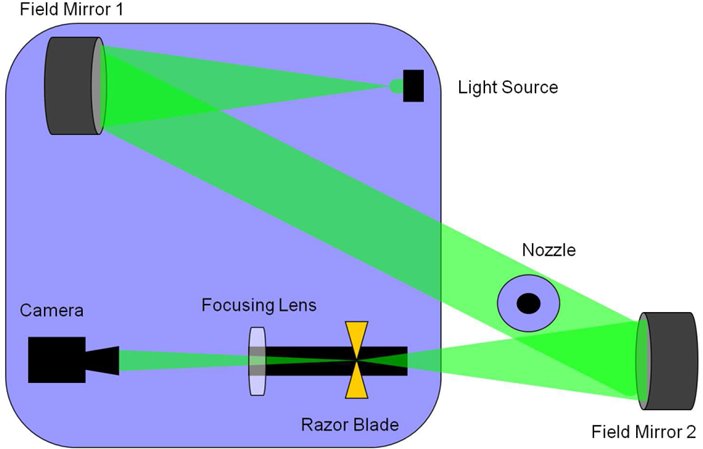Introduction:
How Do You See the Invisible?
One of the problems with studying flows in air, is that air is transparent! This is obviously a good thing, or we wouldn’t see anything else, but it does make studying it more difficult. How do you optically measure what is happening in the air if you can’t see it?
One of the techniques that we use to tackle this problem is called schlieren photography. The word schlieren derives from the German word “Schliere”, meaning “streak” (I will emphasize that the correct form in English is lowercase, as we don’t capitalize nouns in English). Schlieren allows us to see density changes in the air, which is especially visible when studying compressible flow.
How does it work?
National Public Radio have put together a wonderful little video showing schlieren in action, which does a far better job than I’ll be able to do here!
Schlieren relies on the fact that the refractive index of air (a measure of how light propagates through something) is dependent on the air’s density. This is the same physical phenomenon that makes a road shimmer on a hot day – the hot road heats the air, which changes its density. We see this as a shimmering effect. Schlieren takes this same effect, and through some fancy optics, enhances it.

An example of how we set up our schlieren system is presented above. One of the novel approaches developed in our laboratory, through a collaboration with Prof. Christian Willert at DLR in Germany, is the use of a high powered pulsed LED as a schlieren light source. Check out our paper in Experiments in Fluids to learn more!
I received a lot of my early training in the schlieren technique from A. Prof Harald Kleine of UNSW-ADFA, a true pioneer of ultra-high-speed and colour schlieren techniques. Some of his work is captured in the UNSW video linked below.
The Cameras We Use:
Our ultra-high-speed schlieren is only possible through the use of highly specialized cameras. For most of our high speed work, we use a Shimadzu HPV camera. The latest version of this camera can record at ten million frames per second, allowing for the imaging of incredibly transient phenomena, such as this video, courtesy of Shimadzu: